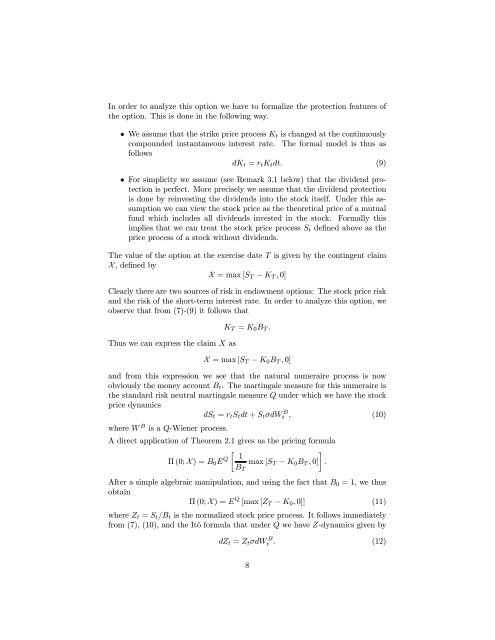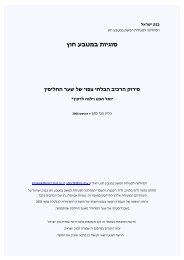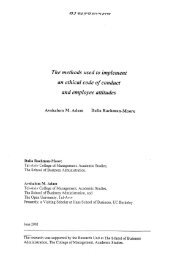ON THE USE OF NUMERAIRES IN OPTION PRICING by Simon ...
ON THE USE OF NUMERAIRES IN OPTION PRICING by Simon ...
ON THE USE OF NUMERAIRES IN OPTION PRICING by Simon ...
You also want an ePaper? Increase the reach of your titles
YUMPU automatically turns print PDFs into web optimized ePapers that Google loves.
In order to analyze this option we have to formalize the protection features ofthe option. This is done in the following way.² We assume that the strike price process K t is changed at the continuouslycompounded instantaneous interest rate. The formal model is thus asfollowsdK t = r t K t dt. (9)² For simplicity we assume (see Remark 3.1 below) that the dividend protectionis perfect. More precisely we assume that the dividend protectionis done <strong>by</strong> reinvesting the dividends into the stock itself. Under this assumptionwe can view the stock price as the theoretical price of a mutualfund which includes all dividends invested in the stock. Formally thisimplies that we can treat the stock price process S t defined above as theprice process of a stock without dividends.The value of the option at the exercise date T is given <strong>by</strong> the contingent claimX ,defined <strong>by</strong>X =max[S T ¡ K T , 0]Clearly there are two sources of risk in endowment options: The stock price riskand the risk of the short-term interest rate. In order to analyze this option, weobserve that from (7)-(9) it follows thatThus we can express the claim X asK T = K 0 B T .X =max[S T ¡ K 0 B T , 0]and from this expression we see that the natural numeraire process is nowobviously the money account B t . The martingale measure for this numeraire isthe standard risk neutral martingale measure Q under which we have the stockprice dynamicsdS t = r t S t dt + S t σdWt B , (10)where W B is a Q-Wiener process.A direct application of Theorem 2.1 gives us the pricing formula∙ ¸1Π (0; X )=B 0 E Q max [S T ¡ K 0 B T , 0] .B TAfter a simple algebraic manipulation, and using the fact that B 0 =1,wethusobtainΠ (0; X )=E Q [max [Z T ¡ K 0 , 0]] (11)where Z t = S t /B t is the normalized stock price process. It follows immediatelyfrom (7), (10), and the Itô formula that under Q we have Z-dynamics given <strong>by</strong>dZ t = Z t σdW B t . (12)8






